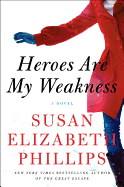
| Publisher: | Morrow | |
| Genre: | Fiction, Romance, Contemporary Women, Contemporary | |
| ISBN: | 9780062106070 | |
| Pub Date: | August 2014 | |
| Price: | $26.99 |
| Starred | Fiction |
by Susan Elizabeth Phillips
Susan Elizabeth Phillips (The Great Escape), loved by fans for her trademark sense of humor and brusque heroes, goes a shade darker in this modern-day gothic delight.
Down-on-her-luck puppeteer Annie takes refuge at Moonraker Cottage on Peregrine Island, planning to gather her thoughts over the long Maine winter in the remote home her mother left her. However, her plans are quickly upset by Theo Harp, bestselling horror author and owner of Harp House, the mansion that looms over Annie's cottage. After a dangerous and demented prank Theo pulled on her when they were teens, Annie will never believe he's anything but a psychopath. Theo wants Moonraker Cottage as his studio, so when Annie finds the place trashed, Theo's her first suspect. But when he tries to protect her as the incidents escalate, Annie's accusations lose steam and her attraction to him grows. The question of whether Theo has changed (or has a different perspective on their long-past conflict) is wrapped up in a more frightening problem: if Theo isn't the one attacking her, who is?
Phillips serves up a contemporary Jane Eyre with a helping of Daphne du Maurier's Rebecca. Her keen eye doesn't miss the elements that make both stories perennial favorites: the struggling but plucky heroine, the powerful man who might be hero or villain, the secret tragedy waiting at the core of the story. She balances these heavier components with her usual humor, largely provided by the puppets, from which Annie imagines running commentary. Phillips's hot winter nights will have readers happily anticipating the cooler seasons ahead. --Jaclyn Fulwood, blogger at Infinite Reads

| Publisher: | Tor | |
| Genre: | General, Fiction, Science Fiction, Thrillers | |
| ISBN: | 9780765375865 | |
| Pub Date: | August 2014 | |
| Price: | $24.99 |
| Starred | Fiction |
by John Scalzi
Haden's syndrome results from a virus that can, in 1% of the cases, "lock in" its victims, leaving them conscious and aware in a body that can no longer move or respond at all. In the 25 years since the virus first appeared, a culture has risen around these victims; these paralyzed people are now able to control robotic bodies remotely (called "threeps," after Star Wars' famous golden droid) and live productive lives.
Newly minted FBI agent Chris Shane is one of those affected by the disease. When his threep stumbles across a complicated murder at the Watergate Hotel involving an "integrator"--a human whose body can be taken over in the same way a threep can--there's no telling how far up the political food chain the evidence may lead. His veteran partner, Leslie Vann, is no slouch, but it will take their combined talents and life experiences to get to the bottom of the murder and the high-level corporate and governmental players who may be behind it all.
Science-fiction writer John Scalzi (Redshirts; Old Man's War) again proves his facility with both world building and character, this time in a near-future tale heavily influenced by police-procedural fiction and speculation into human-computer interface technology. Scalzi never belabors his point, nor does he hit readers over the head with the issues he explores. Rather, Lock In is compelling and fresh, offering a smart take on medical ethics, prejudice and the corrupting power of the corporate world. --Rob LeFebvre, freelance writer and editor
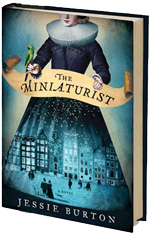
| Publisher: | Ecco Press | |
| Genre: | General, Suspense, Fiction, Thrillers, Historical | |
| ISBN: | 9780062306814 | |
| Pub Date: | August 2014 | |
| Price: | $26.99 |
| Fiction |
by Jessie Burton
Dark shadows, whispered secrets and glimpses of life through ancient keyholes are just some of the elements that infuse The Miniaturist, an evocative, atmospheric debut novel by Jessie Burton. The action takes place during the Dutch Golden Age, in 17th-century Amsterdam, along the Herengracht, one of the most important and prestigious canals in the city, the neighborhood of the richest and most influential.
The story launches in October 1686 when 18-year-old Petronella "Nella" Oortman arrives in Amsterdam. With her father deceased and the family in debt, Nella is married off to a man who her mother believes "can keep a guilder in his purse." The couple is actually married in September, but it is not until October that Nella leaves her mother and siblings at their countryside home in Assendelft and travels to Amsterdam. With Peebo, her caged pet parakeet, in tow, Nella, an imaginative girl, is ready to embark on her new life as the wife of the rich and charming Johannes Brandt--a 39-year-old, high-ranking merchant powerbroker for the Dutch East India Company that plies wares throughout Africa, Europe, Asia and Indonesia.
Upon Nella's arrival, she is surprised to learn that her husband is traveling. In his absence, she is greeted by Johannes's sister, Marin Brandt, a severe, tightly wound, sharp-tongued woman dressed heavily in black who grudgingly welcomes Nella into the household, which also consists of a maid and cook named Cornelia; Otto, Johannes's manservant, with exotic "coffee-bean" colored skin, whom Nella later learns speaks French and English, can plot a map and check the quality of Haarlem wool; and two beloved whippet dogs who worship their master, Johannes.
Once settled, Nella is stymied by the excessively frugal household and her controlling sister-in-law who orders Nella's clothes and drags her to church. Cornelia, the cook-maid, comments, "Marin eats like a mouse and shops like a nun." When Nella questions her sister-in-law about this way of life, Marin replies, "The Bible tells us that a man should never flaunt his wealth."
Marin appears as devout and zealous in her religious belief as she is strict and rigid in managing the household financial accounts. Why is that? And why is she not married? The intrigue only deepens when Nella snoops in Marin's room and discovers a provocative love letter. Who could it be from?
Perplexed, Nella feels invisible and ignored in her new home where she senses an underlying permissiveness and an uncharacteristic friendliness coming from the servants, which Nella is not used to and cannot understand. When her husband is home, which is not often, Johannes is kind, but distant--even rejecting Nella's romantic overtures. He does little to appease his new wife or tame his overbearing sister, whom Nella overhears telling Johannes how to make trades and other business decisions. Why does rich and powerful Johannes make comments about his "cloudy, untouchable wealth"? Is his fortune somehow in jeopardy?
With Johannes always traveling, Nella has many questions she would like to ask her sister-in-law, such as details about her husband's business and about commodity traders like Frans and Agnes Meerman, who deal in sugar loaves. Nella finds that conversation with Marin is never easy, and Marin's responses to inquiries about her brother's work are puzzling: "He turns mud to gold. Water to guilders. He sells other men's stock at better prices. He fills his ships and puts them out to sea. He thinks he's everybody's favorite. That's all I know."
Aggression increases between the two women, and when Johannes presents his new bride with a wedding gift, an exact model replica of their home, "an enormous, looming structure measuring nearly half of Johannes's height... a huge cupboard supported by eight curved and sturdy feet," the balance of power and authority in the household suddenly begins to shift.
At first, Marin takes issue with the lavish gift, which she feels is a garish symbol of wealth and power. At the cost of three thousand guilders, Marin believes that if "invested properly, a family could live off that for years." Nella, on the other hand, sees the cabinet house as "beautiful and useless," an insulting "monument to her powerlessness" as mistress of the actual house.
Marin ultimately encourages Nella to decorate the cupboard. "If you leave the cabinet empty," Marin says, "you'll turn Johannes's gift into a crime of profligacy." Marin gives her pseudo-blessing and extends promissory notes to Nella, finally propelling Nella to leave the house and venture into the busy shopping district in search of a miniaturist who can help her decorate the cabinet, in defiance, with all the material things that Marin detests.
The miniaturist proves to be elusive and is never in the shop; Nella leaves notes at the store. In her travels, Nella also gathers information about her husband and his associations. When startling truths come to light, Nella's loyalty comes into question as she begins to fear for her life--and the lives of others.
During this time, the chronically absent miniaturist sends cryptic messages and unsolicited parcels to Nella--intricately crafted, precise furniture reproductions for the cabinet, along with eerily accurate replicas of the inhabitants of Nella's world.
The miniature creations seem to mirror real-life adversities--often foretold. Who is this mysterious craftsperson who knows so much about Nella and the complex relationships of those in the household? Can this artisan/prophet see into the future? And does the miniaturist have some sort of ominous power and control over Nella's fate?
The idea is as unnerving to Nella as the revelations and rumors that continue to emerge about the secret, flawed lives--and love affairs--of those around her. Suspense builds as the realities of Nella's world shrink in size, becoming as compressed as the confines of that cabinet house.
Burton is a skillful writer. Her narrative is riveting and lyrically written in the present tense. The historical drama plays out over a period of three months against a detailed, sweeping backdrop of Amsterdam, while Nella makes a transformative journey from naïveté to enlightenment to empowerment. The Netherlands, at this point in history, was a largely male-dominated, pious and puritanical, church-governed civilization. Therefore, it is refreshing that Burton chose to focus the story on the plight of Nella and other women in her circle. These female characters wield their influence and vie for freedom behind the scenes, in a repressive, intolerant society ruled by vanity and wealth and plagued by greed and prejudice. In the end, the power of love and obsession, sins and secrets, loyalty and forgiveness bind together a cast of sympathetic characters who all have a part to play in a collectively chilling conclusion. --Kathleen Gerard

| Publisher: | St. Martin's Press | |
| Genre: | Suspense, Fiction, Thrillers, Contemporary Women | |
| ISBN: | 9781250048004 | |
| Pub Date: | August 2014 | |
| Price: | $25.99 |
| Mystery & Thriller |
by Natalie Haynes
Grieving after the violent death of her fiancé, theater director Alex Morris leaves London for Edinburgh to take a job at a last-resort school for troubled teens. Not much has previously engaged these kids, but Alex gradually connects with them by teaching the Theban plays--starting with Oedipus the King--and the role of fate in life.
As the class reads more and delves further into themes of revenge, Alex is unaware that one of her students may be taking the subject matter too seriously and wants to incorporate it into real life. She recognizes her student's obsession too late when she witnesses a shocking incident. Could Alex be blamed for not preventing it, or worse, encouraging it with her lessons?
The Furies may be British author Natalie Haynes's debut novel, but as she demonstrated in The Ancient Guide to Modern Life, she can write with an assured hand about the Greeks. Readers get a refresher course on the classics via the students, who have funny reactions to all the twisted tragedy, using flippancy to disguise their growing interest.
The story alternates between scenes of Alex in a lawyer's office and flashbacks to reveal how and why she ended up there. Guessing what happened isn't hard if the reader is already familiar with Greek mythology and the significance of this novel's title (published as The Amber Fury in England); the narrative doesn't surprise much in that aspect. But the characters are worth getting to know, all broken people trying to escape their own tragic lives. And, unlike traditional Greek tales, the ending offers a glimmer of hope. --Elyse Dinh-McCrillis, blogger at Pop Culture Nerd
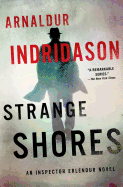
| Publisher: | St. Martin's Minotaur | |
| Genre: | Suspense, Fiction, Police Procedural, Mystery & Detective, Thrillers, Literary, International Mystery & Crime | |
| ISBN: | 9781250000408 | |
| Pub Date: | August 2014 | |
| Price: | $25.99 |
| Mystery & Thriller |
by Arnaldur Indridason, trans. by Victoria Cribb
Arnaldur Indridason (Black Skies) takes a departure from his usual Reykjavik setting in Strange Shores, his ninth Inspector Erlendur mystery. The cast of regular secondary characters is thus completely missing, so readers are treated to a close-up of Erlendur himself--with his cigarettes and obsessions and stubborn tenacity.
Erlendur, who periodically returns to the village of his childhood, is camping out in the ruins of his former home. All his life he's been haunted by the disappearance of his brother, Beggi, who vanished into a blizzard at age eight. Erlendur, age 10 at the time, has always felt responsible for losing his grasp on Beggi's hand.
This loss has created a lifelong obsession with missing people, and spurs Erlendur unofficially to investigate a woman who went missing during World War II. Matthildur also vanished into a storm, and local rumors have ranged from suicide to accident to murder at the hands of her ne'er-do-well husband. Erlendur makes the rounds among the village's elderly, asking questions, reading old letters and seeking closure for both Matthildur's family and himself.
Erlendur's painstaking re-creation of the final weeks of Matthildur's life is a testament both to his dedication and to long memories in small towns, especially those in Iceland. While very different from the rest of the Erlendur series, this mystery is a fantastic addition. Its slow pace and apparently idle beginnings mask dark secrets and a chilling crime. Eerie, even agonizing at times, Strange Shores brilliantly illustrates the haunting power of the past. --Jessica Howard, blogger at Quirky Bookworm
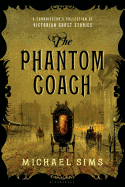
| Publisher: | Bloomsbury | |
| Genre: | General, Fiction, Mystery & Detective, Literary | |
| ISBN: | 9781620408056 | |
| Pub Date: | August 2014 | |
| Price: | $17 |
| Mystery & Thriller |
by Michael Sims, editor
In the introduction to The Phantom Coach, editor Michael Sims (The Dead Witness; Dracula's Guest) explores why modern readers are still so entranced by classic tales from beyond the grave, writing, "the protagonists face the great chilling fact of human life: that it's brief, linear, and moves toward the grave as swiftly as an arrow. Ghost stories permit us to peek behind the shroud." Sims's chosen Victorian works do just that, ranging among topics such as lost children, lingering family spirits and haunted boating expeditions.
Sims's collection features a dozen authors, including Arthur Conan Doyle, Charles Dickens, Elizabeth Gaskell, Henry James, Rudyard Kipling and Amelia Edwards, with many lesser-known and infrequently anthologized pieces in place of more commonly known works from the era. Sims introduces each story with a brief background on the author, notes about how the ghost story fits into the author's oeuvre and, where relevant, how the story relates to the others in the collection (Dickens, for example, edited several of the tales found here for his periodicals Household Words and All the Year Round). The pieces, arranged in chronological order, span the Victorian era, pulled from as early as 1852 and as late as 1907. Combined into one volume, these 12 stories give readers an excellent entry point into the spooky literature of the Victorian era--a time marked by a fascination with death and dying. --Kerry McHugh, blogger at Entomology of a Bookworm
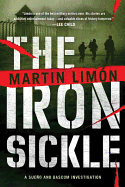
| Publisher: | Soho Crime | |
| Genre: | Hispanic & Latino, Fiction, Mystery & Detective, War & Military, Literary, International Mystery & Crime | |
| ISBN: | 9781616953911 | |
| Pub Date: | August 2014 | |
| Price: | $26.95 |
| Mystery & Thriller |
by Martin Limon
An unusually tall Korean man with a deformed lip enters the U.S. Army Claims Office in Seoul, requests to see the civilian boss and slices the man's throat with an iron sickle concealed inside his overcoat. The murderer escapes amid the ensuing pandemonium. The next night, when the mysterious, sickle-wielding Korean man assassinates an American MP in a neighborhood just outside the army compound and escapes unnoticed again, the stakes become greater.
Army Criminal Investigation Division agents George Sueño and Ernie Bascom aren't assigned to the case until Korean National Police Inspector Gil Kwon-up, aka Mr. Kill, requests them for the joint investigation. The maverick partners dig into the evidence, but what they uncover is certain to earn them enemies on all sides and, very possibly, make them the next targets for the elusive killer.
In The Iron Sickle, a post-Korean war crime story, Martin Limón (Mr. Kill; G.I. Bones) engages readers by blending Korean history, lore and geography with a tightly developed plot. His descriptions of war horrors are memorably disturbing without being gratuitously graphic. And Sueño and Bascom are a fascinating pair who add occasional levity without overshadowing the gravity of the novel's subject matter. The plot features several characters from prior novels, allowing regular series readers a bit more insight into the relationships previously forged; however, readers new to Sueño and Bascom should have no trouble following the story on its own.
Limón uses Korean (which he then translates) throughout the novel, which may momentarily pull some readers out of the story, but the momentum of the plot will certainly right their course. --Jen Forbus of Jen's Book Thoughts

| Publisher: | Princeton Architectural Press | |
| Genre: | Health & Fitness, Beauty & Grooming, General, Rich & Famous, Biography & Autobiography, Fashion, Personal Memoirs, Design | |
| ISBN: | 9781616892760 | |
| Pub Date: | August 2014 | |
| Price: | $24.95 |
| Biography & Memoir |
by Emily Spivack
Emily Spivack's fascination with the past lives of clothing led her to create a website, wornstories.com, on which she collects "sartorial memoirs" from friends, family, acquaintances, celebrities and everyday strangers. Now her book, Worn Stories, assembles those accounts. They are short, and generally recorded as told to Spivack but are occasionally written by the contributor. Each brief narrative is accompanied by a photograph of the item, against a white background, adorned at most by a clothes hanger. The text describes how the speaker came to own the article, or what took place in and around it that made it worth keeping--sometimes for decades. A dress, a pair of shoes, a hat or accessory conveys an emotion or an experience: love, loss, accomplishment. They may symbolize a place or a time in a life, or remind us of what we don't want to forget.
These vignettes are at turns hilarious (humorist John Hodgman's long-sought Ayn Rand dress or trucking manager Pamela Jones's party dress), silly (reporter Jenna Wortham's sequined top) and poignant (creative ambassador Simon Doonan's Lycra shorts or writer/bartender Kelly Jones's tie-dyed wrap skirt). Some have historical significance: Holocaust survivor Dorothy Finger had an ill-fitting suit made from a piece of wool fabric that was the only thing she saved from her life in Poland.
Spivack speaks directly to her reader only in a brief introduction. The collection of contributors' reports forms a whole that is entertaining, thoughtful and loving of the universal tales we have to tell about the garments we carry through our lives. --Julia Jenkins, librarian and blogger at pagesofjulia
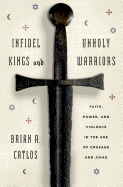
| Publisher: | Farrar, Straus & Giroux | |
| Genre: | History, Medieval | |
| ISBN: | 9780809058372 | |
| Pub Date: | August 2014 | |
| Price: | $28 |
| History |
by Brian A. Catlos
Popular conceptions about the role of religion in the Middle Ages take two basic forms. One version looks at the medieval world in terms of crusade, jihad and pogrom: a violent collision between mutually intolerant communities of Christianity, Islam and Judaism, with long-term consequences for the modern world. The alternate vision, popularized in works such as María Rosa Menocal's The Ornament of the World and focused on medieval Spain, is that of La Convivencia--a culture of mutual tolerance and reason. In Infidel Kings and Unholy Warriors, religious historian Brian A. Catlos (The Victors and the Vanquished) convincingly argues that neither interpretation adequately addresses the shifting political, economic and religious alliances of the Mediterranean world from 1050 to 1200.
Catlos looks at the complex relationship between politics and religious identity in the medieval Mediterranean through the stories of men who straddled communal boundaries in pursuit of power. Muslim and Christian kings made alliances against common enemies. Latin Christians went on crusade against other Christians. Sunni Muslims declared jihad against Shiites. Jews served as governors, generals and administrators in both Muslim and Christian kingdoms--and in one case came close to ruling a Muslim state. Mercenary warriors, including the legendary El Cid, switched sides whenever it was in their own interest.
Infidel Kings and Unholy Warriors is a fascinating and complex account of diversity, collaboration and conflict in the period when medieval Christianity met the Islamic golden age. --Pamela Toler, blogging at History in the Margins
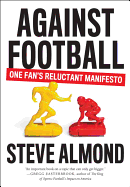
| Publisher: | Melville House | |
| Genre: | Health & Fitness, Football, General, Sports & Recreation, Biography & Autobiography, Diseases, Nervous System (incl. Brain), Sports | |
| ISBN: | 9781612194158 | |
| Pub Date: | August 2014 | |
| Price: | $22.95 |
| Sports |
by Steve Almond
Those who don't care for the U.S.'s favorite fall sport might be inclined to pick up Steve Almond's Against Football, looking for validation of their position. Those who love the sport may be drawn in by its subtitle, One Fan's Reluctant Manifesto, for similar reasons. Almond's power lies in his ability to speak to both readers.
Almond (Not That You Asked; Candyfreak) states that he's loved football all his life--playing the game, following it, bonding with father and brothers and friends over it--but he can no longer watch it in good conscience. This collection of essays, reflections and arguments is his attempt to reconcile the sport's appeal and allure ("in its exalted moments, [it] is not just a sport, but a lovely and intricate work of art") with its undeniably problematic aspects. The brutality and violence of the play is the most obvious issue, but Almond also addresses the culture surrounding football, commenting on its tolerance, if not outright cultivation, of homophobia, racism, greed and other undesirable attitudes.
Is it right that an activity proven to cause irreversible physical and mental damage is promoted to boys and young men as a viable career path? How do athletic scholarships support the educational mission of universities? Why does reverence for football players' skills seem to give them a pass for sometimes-criminal behavior off the field? None of these questions are easily answered, but healthy debate is what Almond is after here. Opinionated and provocative, Against Football may be a "reluctant manifesto," but it proves the author is passionately interested in starting a conversation. --Florinda Pendley Vasquez, blogger at The 3 R's Blog: Reading, 'Riting, and Randomness

| Publisher: | Graphix | |
| Genre: | Juvenile Nonfiction, General, Family, Siblings, Comics & Graphic Novels | |
| ISBN: | 9780545540599; $10.99 paperback 9780545540605 | |
| Pub Date: | August 2014 | |
| Price: | $24.99 |
| Starred | Children's & Young Adult |
by Raina Telgemeier
Raina Telgemeier (Smile) once again mines her family history with humor and compassion, for this graphic novel memoir that centers on a road trip.
Mom, Raina, and her two siblings, Amara and Will, pack up the family van, which they'll drive from California to Colorado for Raina's mother's family reunion. Daddy will fly out to meet them. When Raina points out that her mother doesn't get along with her siblings, Amara takes that as a cue to pick a fight with Raina. "Why did I ever ask for a sister?" Raina asks herself in a thought balloon. Telgemeier segues into a memory in which she begged for a sister; she neatly signals the flashback with yellow-tinged frames around the comic strip panels, the start of a pattern. Once again, Telgemeier gets all the tempos of family life just right: arguments metamorphose into laughter; alliances shift from sisters versus brother, to Amara and Will versus Raina, and so on. Additional flashbacks explain Raina's fear of snakes (a key plot element when Amara gets one as a pet), Will's arrival and their father losing his job. This last develops especially effectively, as Telgemeier explores in a dream sequence--shrouded in purple--her feelings of fear and her need for reassurance.
Telgemeier's willingness to lay bare her vulnerabilities as a 14-year-old (including a scene of her cousins making fun of her teddy bear) will strengthen readers who also struggle to get along with their siblings and to act more "grown up." --Jennifer M. Brown, children's editor, Shelf Awareness
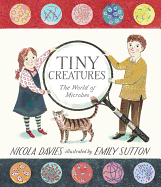
| Publisher: | Candlewick | |
| Genre: | Diseases, Illnesses & Injuries, Science & Nature, Juvenile Nonfiction, Environmental Science & Ecosystems, Health & Daily Living, Biology | |
| ISBN: | 9780763673154 | |
| Pub Date: | August 2014 | |
| Price: | $15.99 |
| Children's & Young Adult |
by Nicola Davies, illust. by Emily Sutton
For curious minds and budding scientists, this introduction makes the giant job of minuscule microbes understandable and fascinating. The work of a microbe may be good or bad, from a human perspective, as author and artist aptly demonstrate.
In Emily Sutton's illustration on the title page, two siblings sail on the sea with their cat while a school of small fish swims below. "You know about big animals, and you know about small animals..." begins Nicola Davies's (Outside Your Window) text; a killer whale dwarfs the boat, and above the horizon an ant walks on a tree limb. Everything gels with a turn of the page: "but do you know that there are creatures so tiny that millions could fit on this ant's antenna?" The ant's antenna is enlarged "as big as a whale" so that readers can see the microbes residing there. "Right now there are more microbes living on your skin than there are people on Earth," Davies tells us, followed quickly by a "Don't worry!" and an explanation of how microbes residing inside and outside of our bodies keep us well. The book gives examples of the different shapes and sizes of microbes, and their role in breaking down food into compost and milk into yogurt.
Brother and sister model how germs ("the wrong kind of microbes") make you sick and how to "stop them from getting in." This is a fine introduction to a microscopic world. Those who wish to know more may enjoy It's Catching by Jennifer Gardy. --Jennifer M. Brown, children's editor, Shelf Awareness
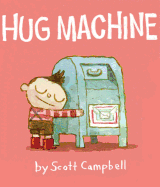
| Publisher: | Atheneum/S&S | |
| Genre: | Imagination & Play, Social Issues, Juvenile Fiction, Humorous Stories, Emotions & Feelings | |
| ISBN: | 9781442459359 | |
| Pub Date: | August 2014 | |
| Price: | $16.99 |
| Children's & Young Adult |
by Scott Campbell
With his overlong arms, wide eyes, and red boots that match his shirt's stripes, the narrator of Scott Campbell's (Zombie in Love) enchanting picture book announces his arrival from a hilltop: "Whoa! Here I come! I am the Hug Machine!"
He hugs his deadpan mother, father and older sister as he explains, "No one can resist my unbelievable hugging. I am the Hug Machine!" The charm of the book lies in the pictures' contrast with the Hug Machine's running commentary. He embraces a policeman, elderly gardener, businessman and musician, who all wear the same straight-man expression as his family members. The Hug Machine demonstrates opposites: "My hugs make the biggest feel small," he says, encircling a tall bear, and "the smallest feel big," as he snuggles a turtle. He hugs soft things (a lamb) and hard things (a large stone). His greatest success comes with a crying baby, who smiles when hugged: "Hug accomplished!" says our hero, as the page turns pink with rays that suggest a flashing light. That success leads to others: a porcupine ("I am so spiky. No one ever hugs me"), for which he dons protective gear, and a blue whale ("Surely I am too big for you to hug"), which requires a ladder. Campbell's blue and green tones for the recipients make the match up with the predominant reds of the Hug Machine's attire seem inevitable.
Campbell ends on a human and humorous note: even Hug Machines need refueling--and also to be hugged. Guaranteed to start a hugging frenzy. --Jennifer M. Brown, children's editor, Shelf Awareness